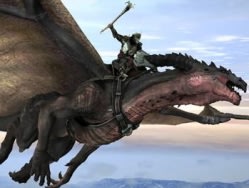 The PlayStation Vita won't hit store shelves for another month, but some critics are already declaring it a disaster, based on early sales returns.
The PlayStation Vita won't hit store shelves for another month, but some critics are already declaring it a disaster, based on early sales returns.That's quite premature -- not to mention a bit fatalistic -- but you don't get to become a multi-billion dollar, multinational company without making a few mistakes. For every Walkman and Playstation 2 there exists a handful of other Sony ideas that didn't ring true with consumers.
Some were critical flops. Some had disappointing sales. Some weren't even physical products. But, in the end, all of them fell short in one way or another. Here's hoping the Vita avoids the fate of these Sony misfires.
PSP Go
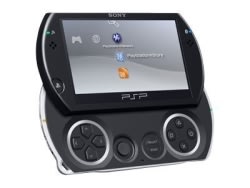 The concept of a gaming system that only delivers content via digital delivery sounded promising. After all, by bypassing retail and doing away with physical media, costs would be lower and players could get great titles for less. Well, that's what we assumed, anyway.
The concept of a gaming system that only delivers content via digital delivery sounded promising. After all, by bypassing retail and doing away with physical media, costs would be lower and players could get great titles for less. Well, that's what we assumed, anyway.It turned out that the digital games were no cheaper than physical copies — and worse, Sony struggled getting digital copies out in time with the physical retail release. A steep price point ($250?!) gave it a black eye, while the lack of a UMD drive meant that gamers who had built inventories of PSP games weren't able to port them over without buying new copies. Though it's still being produced in North America, it was discontinued in other regions a mere two years after its release. Talk about going nowhere fast.
BetaMax
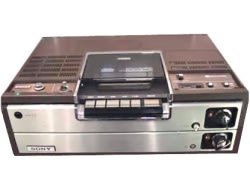 The war in the mid-1970s for the home video audience was a fierce one — and you would think that Sony, then at the height of their power, would have been the force to bet on when they unveiled the BetaMax in 1975.
The war in the mid-1970s for the home video audience was a fierce one — and you would think that Sony, then at the height of their power, would have been the force to bet on when they unveiled the BetaMax in 1975.Instead, consumers rejected the company's attempt to dictate an industry standard and opted to go with JVC's VHS format, which traded picture quality for recording length (three hours to Betamax's one). The studios backed VHS as well, which would go on to rule the decade, while Sony's format would quietly fade away.
The PS3's launch price
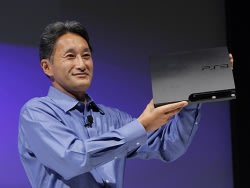 When Kaz Hirai took to the E3 stage in 2006 and announced the PlayStaton 3 would cost as much as $599, jaws dropped — and more than a few people in the audience wondered if he had misread the teleprompter.
When Kaz Hirai took to the E3 stage in 2006 and announced the PlayStaton 3 would cost as much as $599, jaws dropped — and more than a few people in the audience wondered if he had misread the teleprompter.He hadn't. That stratospheric price point put a damper on enthusiasm for the console and led a lot of fans to the less expensive Xbox 360 for their high definition gaming options. While the PS3 hardly flopped, the initial pricing is often pointed to as the reason the system isn't leading the pack like its predecessor.
eVilla Network Entertainment Center
 While the idea of a 'network entertainment center' makes sense today, it was a little less obvious in 2001. The idea was to create a web and e-mail station that cost less than a standard PC.
While the idea of a 'network entertainment center' makes sense today, it was a little less obvious in 2001. The idea was to create a web and e-mail station that cost less than a standard PC.It didn't catch on. Why? Lots of reasons, including a crummy sound system, Sony's refusal to support platforms such as Shockwave and Windows Media, and a baffling $500 price point (in addition to monthly charges). Sony recognized the problem quickly, killing the eVilla within two months and refunding everyone who bought one.
MiniDisc
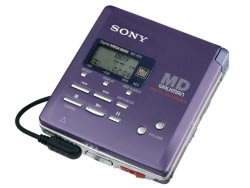 In 1992, Sony offered a recording option that let people make crystal clear copies of their music. It was markedly better than the audio cassette and cheaper than the recordable CD (which at the time cost $14 each — plus the cost of hardware). Sony counted on CD-R to remain at stratospheric price levels for 10 years, but they didn't.
In 1992, Sony offered a recording option that let people make crystal clear copies of their music. It was markedly better than the audio cassette and cheaper than the recordable CD (which at the time cost $14 each — plus the cost of hardware). Sony counted on CD-R to remain at stratospheric price levels for 10 years, but they didn't.They also didn't count on the advent of the MP3 file format. The adoption of MP3 as an industry standard further doomed the MiniDisc and its ATRAC format, and while it was something of a hit in Japan, it just never caught on in North America.
AIBO
 How can you go wrong with a robotic dog? Simple: Make it kind of creepy and overly expensive.
How can you go wrong with a robotic dog? Simple: Make it kind of creepy and overly expensive.Launched in 1999, AIBO (short for Artificial Intelligence roBOt) was able to walk and "see" its environment, and even recognize certain spoken commands. But outlandish pricing -- a base model cost a cringeworthy $2000 -- the digital doggie was never adopted by the mainstream market. It made it through three generations, but was mercifully put to sleep in 2006.
PSX/PlayTV
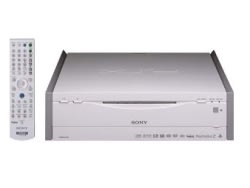 While there has been plenty of chatter about game consoles doubling as DVRs, no one has hit upon the magic formula to make that work yet. You have to give Sony credit for trying, at least.
While there has been plenty of chatter about game consoles doubling as DVRs, no one has hit upon the magic formula to make that work yet. You have to give Sony credit for trying, at least.The PSX (for the PS2) and Play TV (for the PS3) had a similar function: letting people record their favorite shows using their PlayStations. Priced exorbitantly, neither struck a chord with users, and Sony killed both products before they ever set foot onto U.S. shelves.
PlayStation Home
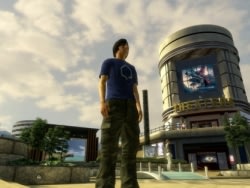 Xbox Live managed to take the lead in the online console space by offering a sense of community and a sense of achievement. Sony, in 2008, tried to launch something similar with the free PlayStation Home virtual world, which one-upped Microsoft by giving users an avatar and both private and common areas. It was, in some ways, a sort of Second Life for the PS3.
Xbox Live managed to take the lead in the online console space by offering a sense of community and a sense of achievement. Sony, in 2008, tried to launch something similar with the free PlayStation Home virtual world, which one-upped Microsoft by giving users an avatar and both private and common areas. It was, in some ways, a sort of Second Life for the PS3.The problem? It was boring and sprawling and players largely ignored it. Undaunted, Sony's still trying to keep Home relevant, and to be fair, it has actually gotten a lot better since its rough beginning. But most PS3 owners still bypass it and head straight into their games.
Mylo
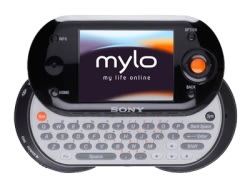 Short for 'My Life Online', this handheld device was meant for portable instant messaging, Web surfing and the playback and sharing of media files. Sound familiar? That's because you've probably got a cell phone in your pocket that can do the same things.
Short for 'My Life Online', this handheld device was meant for portable instant messaging, Web surfing and the playback and sharing of media files. Sound familiar? That's because you've probably got a cell phone in your pocket that can do the same things.Adding to the problems? It only worked in WiFi hotspots and originally cost nearly $300. Even worse, it was released in 2006, a mere year before Apple would change the mobile experience forever with the iPhone. The fact that Sony kept it alive for four years is the really amazing part, though.
Lair
 How can a game about a guy flying a dragon while fighting monsters, created by the team who made the superb Rogue Squadron games, all powered by the graphical force of the PS3 go wrong? Simple: Ignore any real story components and pair it with one of the worst controllers to hit the gaming world (that would be the PS3's Sixaxis controller).
How can a game about a guy flying a dragon while fighting monsters, created by the team who made the superb Rogue Squadron games, all powered by the graphical force of the PS3 go wrong? Simple: Ignore any real story components and pair it with one of the worst controllers to hit the gaming world (that would be the PS3's Sixaxis controller).Once hoped to be a system-seller, Lair turned out to be anything but. GameTrailers, Games Radar and countless other sites dubbed it one of the most disappointing games of the decade. And Sony didn't earn a lot of love by sending critics a reviewer's guide and a note encouraging them to "open your mind and hands for something very different" long after reviews were posted. LINK


